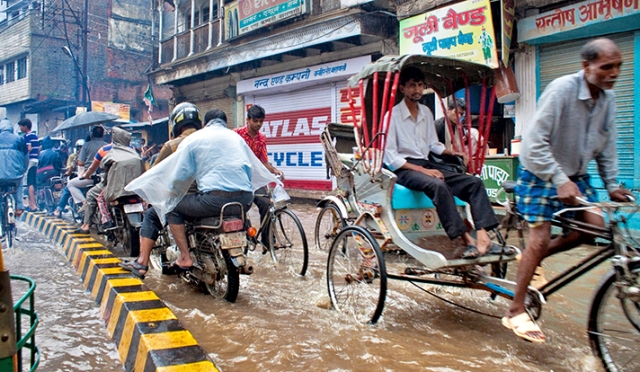Jan 27 2016
A Yale University study suggests that continent-scale monsoons will adapt to climate change gradually, without suddenly losing their watery oomph.

Writing in the journal Proceedings of the National Academy of Sciences the week of Jan. 25, Yale atmospheric scientists William Boos and Trude Storelvmo say a broad range of factors — from changes in land use to increased aerosol emissions and greenhouse gas concentrations — would likely prompt changes in the massive air circulations commonly known as monsoons. However, the researchers say, those changes will not abruptly alter the strength or water volume of monsoons over the next century.
Monsoons deliver water to billions of people around the world annually — sometimes with dramatic consequences for public safety and croplands. Wet monsoons, typically lasting several months, blow into South and Southeast Asia from the southwest between May and September; dry monsoons come into the region from the northeast from October to April.
In the past decade, theories have emerged about how these winds might be affected if greenhouse gases and other human influences on climate reach a “tipping point.” The theories predicted that monsoons would see a sudden, downward shift in strength.
Yale’s research indicates a different scenario.
“Our theory and our computer models both show that monsoon rainfall will change smoothly in response to changes in aerosol emissions, land use change, and greenhouse gas concentrations,” said Boos, an associate professor at Yale and a member of the Yale Climate and Energy Institute. “This does not mean that the changes in monsoon rainfall will be small, only that there is no reason to expect an abrupt change.”
Boos said previous theories omitted the fact that air cools as it rises. Called “adiabatic cooling,” this process is responsible for the familiar drop in temperature that occurs as masses of air rise over mountain ranges.
Boos also noted that normal, year-to-year variability in monsoons will still occur, even amid long-term changes in monsoon patterns. “For example, India is often dry during El Niño years, so even if Indian monsoon rainfall gradually increases over the next century, there will very likely be unusually dry years that occur occasionally,” Boos said.
Yale’s High Performance Computing Center aided in the research, which also was supported by grants from the National Science Foundation and the Office of Naval Research.